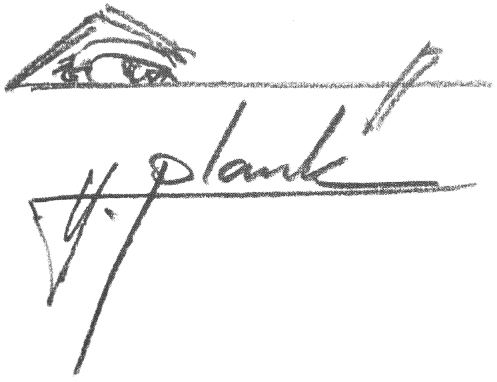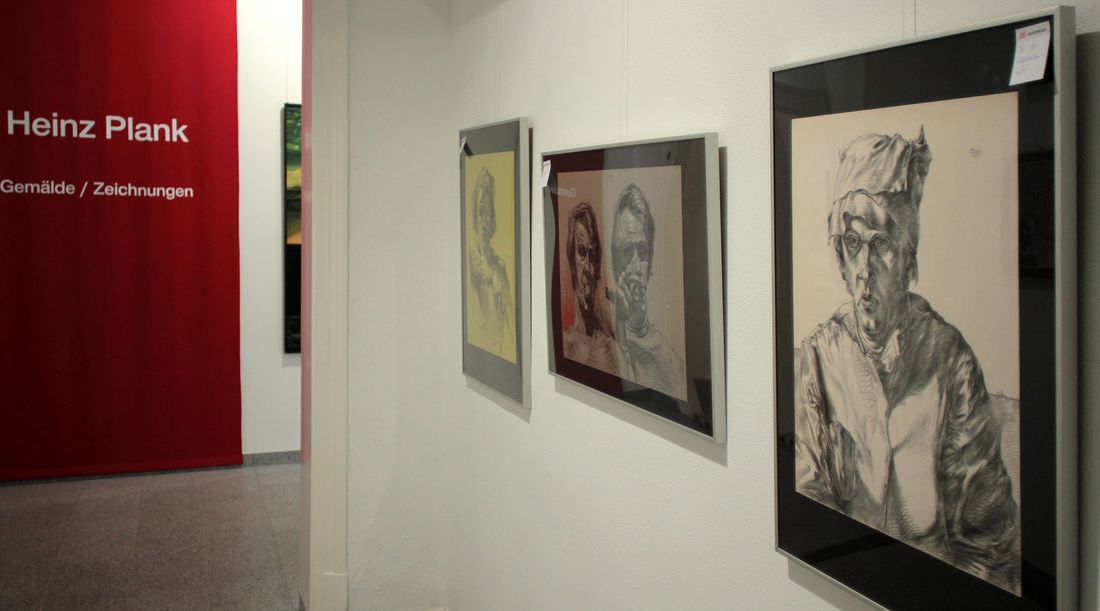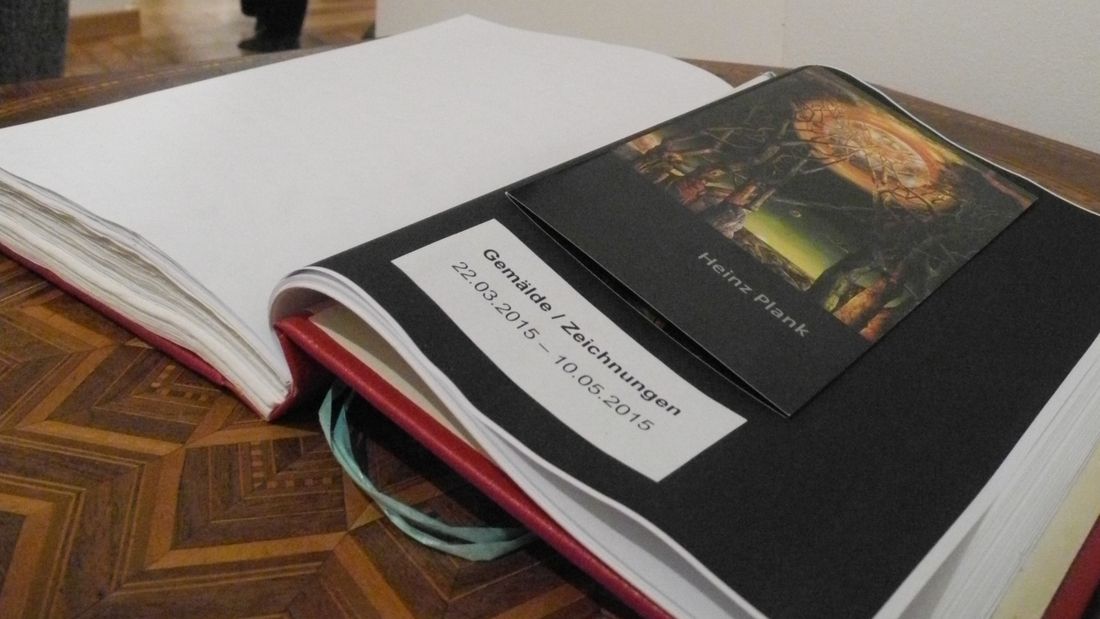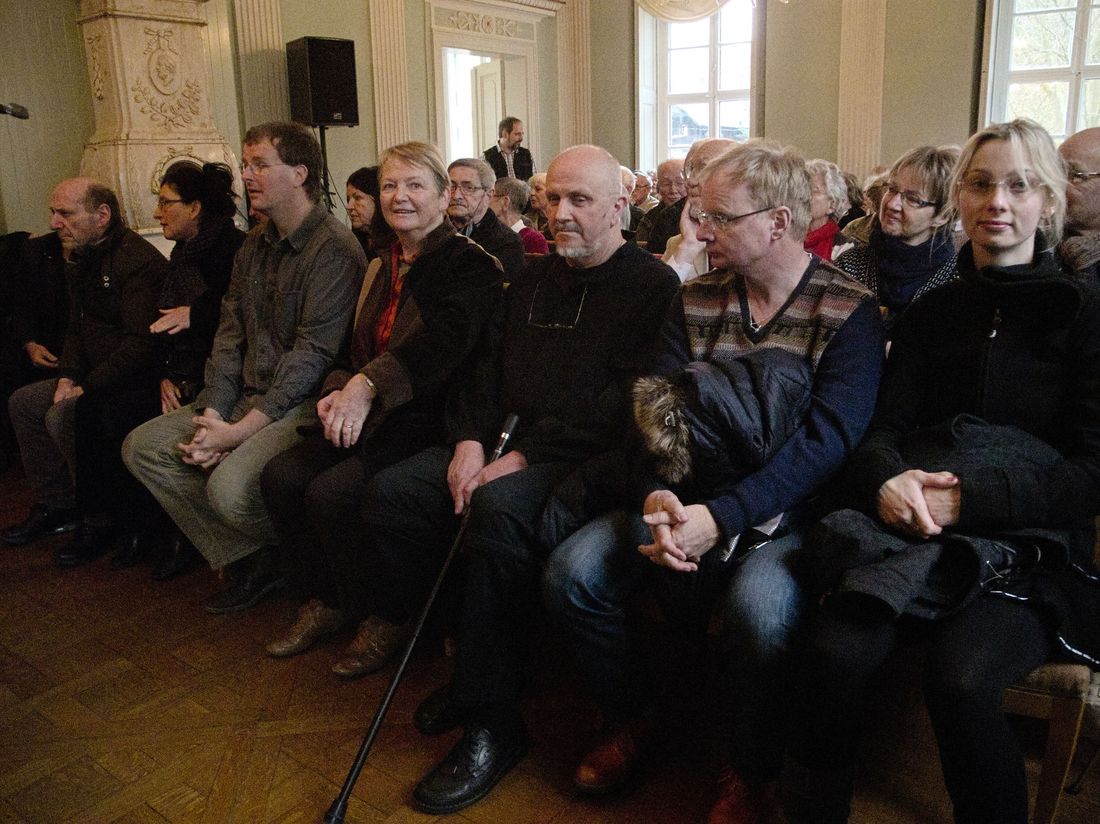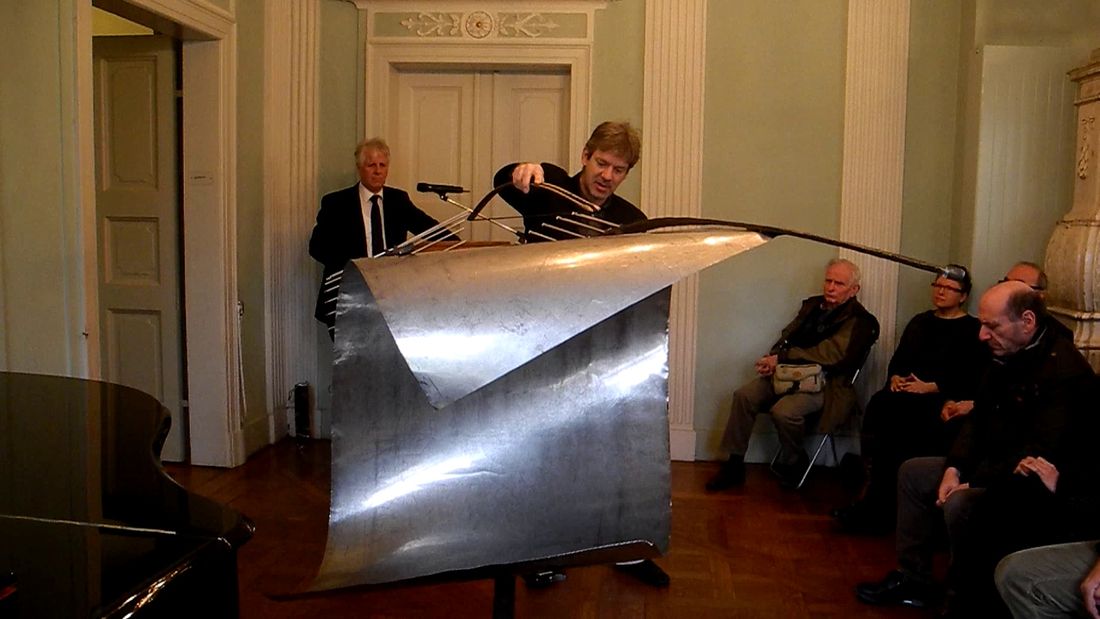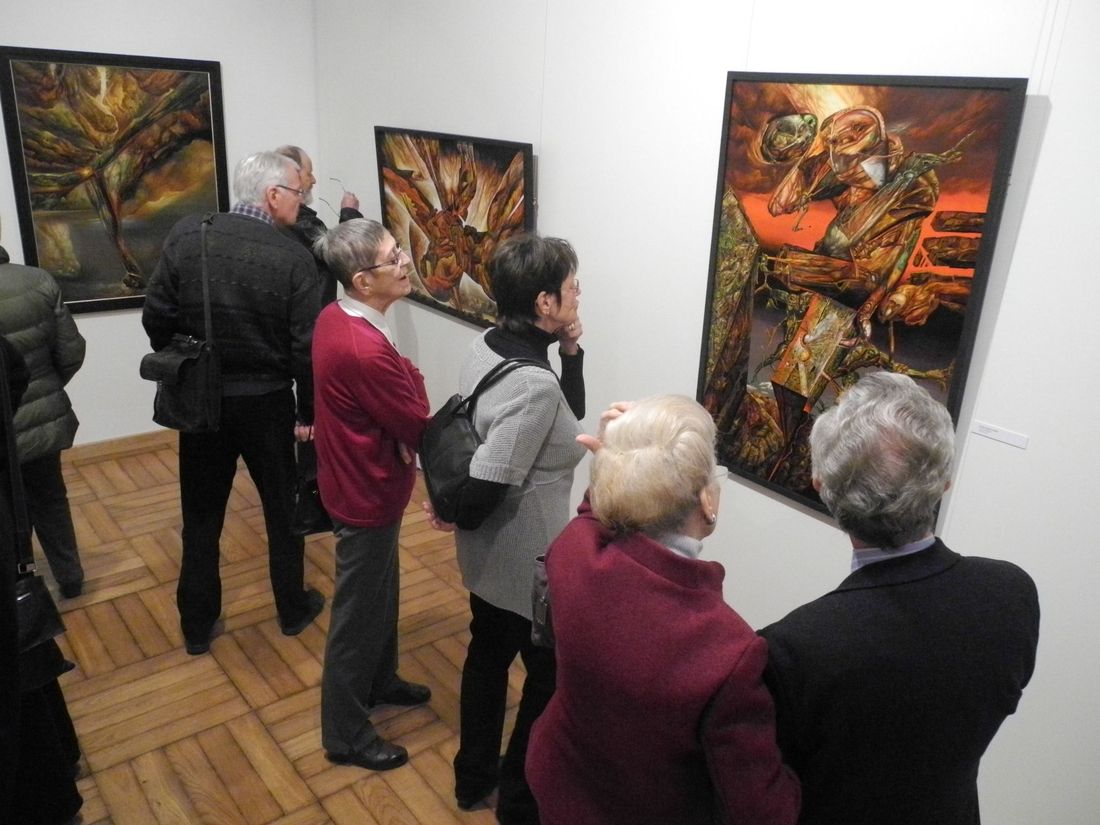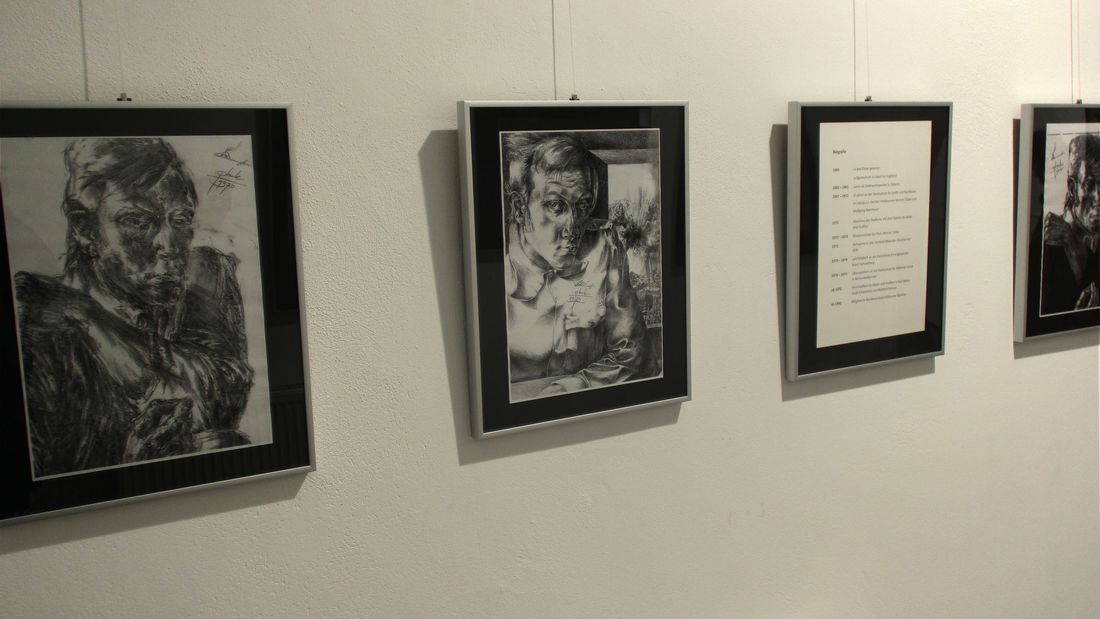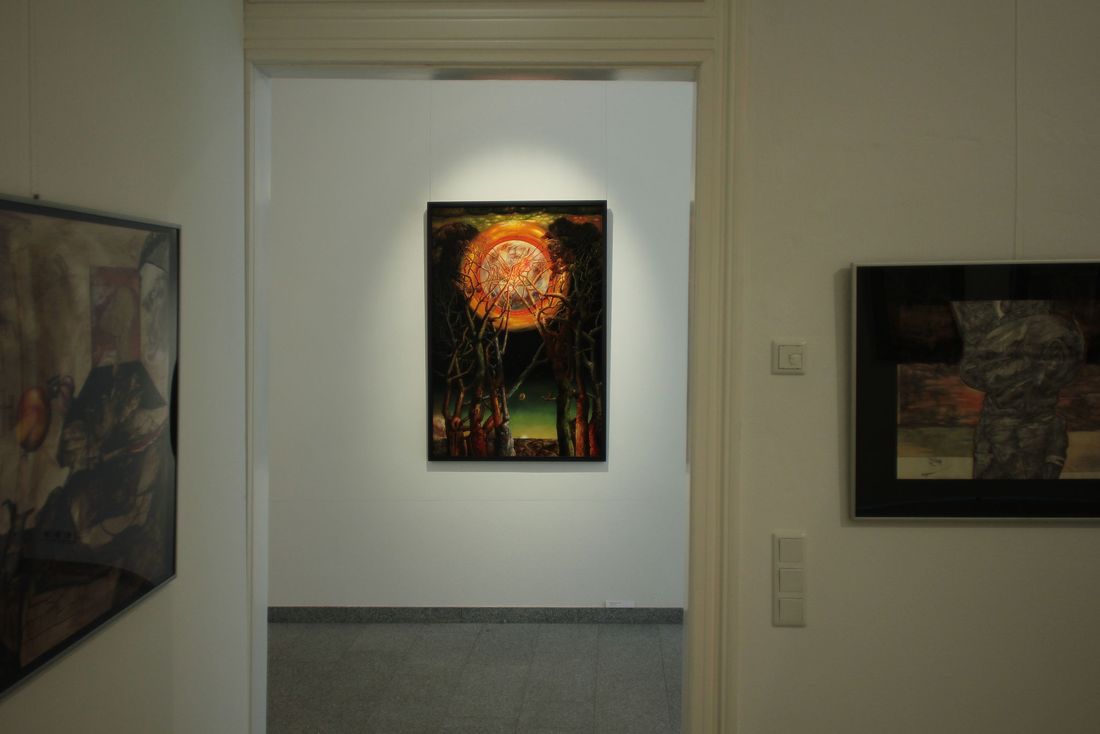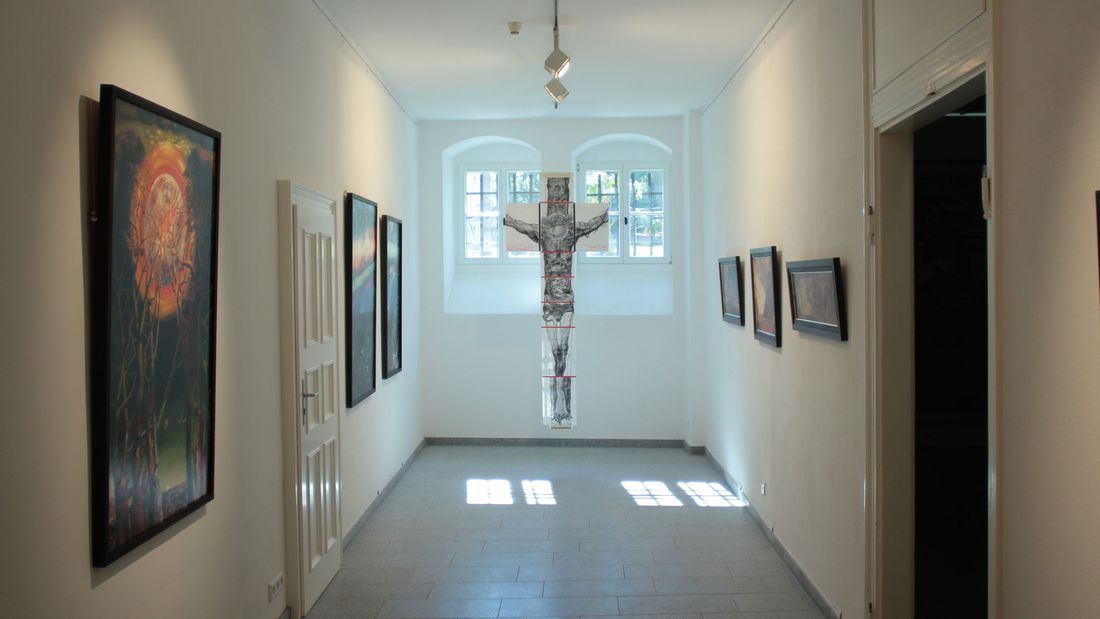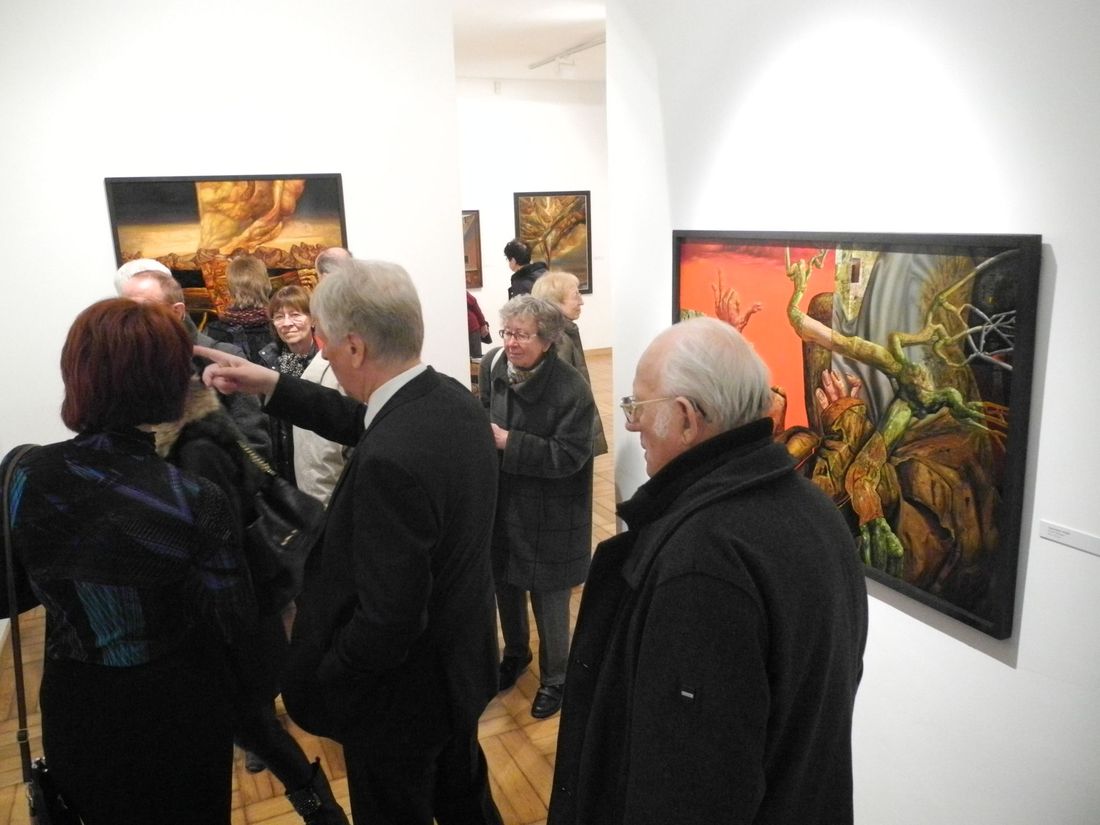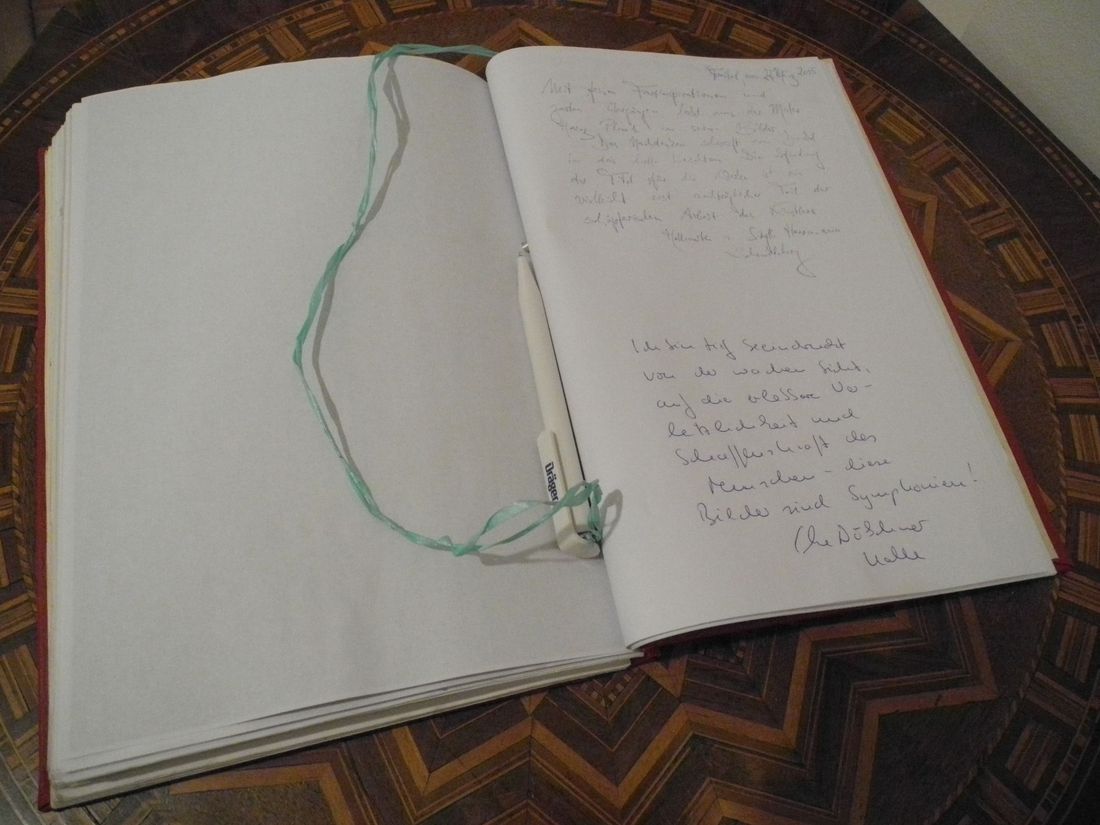Eulogy
(Copyright: Rolf Günther, released with kind permission, translated by Andreas Plank)
Dear Mr. head mayor,
ladies and gentlemen of the city councils,
dear Mr. Plank, Mrs. Plank,
dear friends of our house.
I am pleased to welcome you most warmly on this first spring Sunday of the year at Castle Burgk to the opening of the exhibition of works by Heinz Plank.
To some among you, the painter would probably no stranger, as two wonderful plates by his hand grace for a long time our art collection. Two years ago, the artist appropriated them generously to our house. Some of you, who are loyal visitors, will recall perhaps as well our exhibition from the year 1999. Then, we presented the paintings of Heinz Plank, in the context of sculptures by Fritz Böhme. This is all far back, and back then we still belonged to the “middle generation”—reason enough to look now at new and newest.
At this point please let me go back even a little deeper into the past. My first direct encounter with the work of the then Karl-Marx-Stadt-based painter dates back to the year 1986. The meritorious art shop Kühl on the Zittauer Street in Dresden at that time had set up a personal exhibition of Heinz Plank—at a place rich of tradition, certainly a first artistic accolade, the Gallery Kühl was but as a good address and as trustee of the best of Dresden- and the Saxon Art of classical modernism, but also one of the truly progressive contemporary works.
I knew at this time Plank's images as reproductions in the then Central Institution for Art, the journal “Bildende Kunst” [Visual/Educational Art]. And right there as a young eleve of art I had been thrilled in 1977 by a triptych in the style of the old masters, which was to be seen on the VIII. Art Exhibition in the Albertinum [Dresden]. I mean the large-format “The restoration doesn’t take place”. It was a picture where Bosch and Goya, but also Dali and Dix stood behind. It was unusual and far from the heroic poses of the House Committee on Peace, or of the activists’ honoured worker portraits. And so the official critics reacted unsettling and upset to some extend, so they have existed at all back then. Wolfgang Hütt, one of the art popes of the GDR, wrote at the time:
“By the way, by several of his younger colleagues (it was meant Heinz Zander) now Franz Radziwill is discovered. Details from the world of motifs of that painter used Heinz Plank. His image, wants to convince that the restoration can not take place, because … yes because? All the effort of motif in particular and all the studies of historic art that is recognizable in the image—I haven’t got the answer from it. Perhaps there have been done some glimpses to much in burly picture tomes? Hardly to whom, who trusts his eyes and who masters what they convey to his consciousness.
Certainly the many urge-lowing topics force to the look around for means of realisation. Sometimes, of course, the simple view able to be empathized would be sufficient. Often more ideal flows into it, than the even bold image ideas create it. A restoration, as would be quite possible by squinting to the history of art, did not take place. The artistic revolutionary to me is but burdened by palish thoughts, in only a few cases expressed really picturesque.”
Despite these official concerns, I was now on the quest for the original encounter with Plank’s art, and then this came for me at the Gallery Kühl.
There I found the painting “Zerrissen – Sein” [riven—being] an early work created 1975/77, so only shortly after the time of being master student at Werner Tübke, an image which for me is still today one of the most significant works of Heinz Plank. The artist himself has forgotten it, perhaps, almost. On this early plate a man is demonstrated to us: a martyred, a physically and perhaps also spiritually torn man, unsparing hard, gauging the limits of tolerability. A picture, risen from the Boards of Hell of Bosch or the crucifixions of Grünewald, deeply related to the “Ecce homo” of Ratgeb.
Why am I telling you this? Because it’s still today, almost forty years later, my opinion that in this early masterpiece the artist and the very man, Heinz Plank was incorporated—not stylistically and technically, but mentally and ideologically.
When, a few months ago in preparation for today’s exhibition, I was riffling through the commendable pictorial “Heinz Plank – Beschwerliches Fliegen” [Heinz Plank—Cumbersome to fly], to me this recognition again was facing me, however without that very image being represented there.
Susanne and Klaus Hebecker, the owners of the “Bilderhaus Krämerbrücke” [House of Pictures ‘Grocer Bridge’] in Erfurt, both profound connoisseurs of the works of Plank have once written about this bipolarity aptly:
“Even more fascinating is the force of expression of the antithetical principles of this world of images between light and darkness, altitude of flight and camber, the summit and the abyss. It shows the wonderful and terrible at the same time. The Man receives meaning only in face of the background of the world’s whole. Against the being in protection Plank sets the hold in the infinite.”
I myself have compared in my catalogue text “Jenseits von Eden” [Beyond of Eden] the art of Heinz Plank by the wanderings of Dante. After all Dante Aligihieri had put the following letters above the gates of hell, which he and Virgil pass through:
Through me you go into the grief-city
Through me you go into the losts’ cell
Through me you go to suffer eternal perpetuityFrom justice the Creator gave me my site
The divine might has dilated me
The first love and the highest bright!Before me no created thing has brought
Only eternal, and I eternally stand
Let any hope who pass through me you oughtHell, III. Singing (adaptation of Stefan George)
The further way of both, ladies and gentlemen, is well known to you, and this ends in XXXIII. Singing of Heaven of the “Divine Comedy”, as follows:
Now he’s approaching you from the deepest bottom’s glow
Of the universe rose to this very steep
Through all the stages saw the ghostly flowsAnd calls to you that your grace grants
The forces of his look and that he may come
Even further up to the major salvation
Heinz Plank has walked this path almost half a century. He is a compassionate one from and in this world, in the Small and the Large, from the microcosm and from the macrocosm. And this ordeal, the artist captures in precious plates of the most delicate colour nuances. You can convince yourself of this in a moment.
The basis for this phenomenal mastery received the 1945-born artist at the Leipzig Academy for Graphic and Book Art, at which he studied in 1967–72 at Wolfgang Matthäuer and Werner Tübke. For a year he was even his master student. Heinz Zander, the artist colleague from Leipzig once said aptly:
“A master pupil is no pupil, but a master who goes to school to an even greater master.”
And Tübke was, despite all the reservations, a great master and certainly a great teacher. He also knew the artistic heritage and utilized it. In this sense, also, Heinz Plank is a traditionalist like his teacher in the best sense. Friedrich Nietzsche already, this smasher of the old plates, had spared one of the same kind—the pedigree. In the “Twilight of the Gods” it is said therefore:
“Everything good is inheritance, what is not inherited is imperfect, is beginning.”
After studying Heinz Plank himself took action to educate. Between 1973 and 1975, he taught at the School for Applied Art in Schneeberg, and at the Academy of Fine Arts in Berlin-Weißensee.
Since 1976, he works as a freelance, first in Chemnitz, today in Niederlichtenau.
Ladies and gentlemen, before I release you into the exhibition, let me perhaps clarify or explain a word or two to the understanding of art.
The works of Heinz Plank are not easy to digest. Often you can hear the pun “What’s that supposed to mean? What is the artist telling us?”
I believe Dix said once:
“Artist do not talk, paint.”
And so Heinz Plank, spoke hardly about his art. And that’s right this way. Art calls for the visitor’s understanding, a willingness to bring in your own knowledge. You have to engage willingly, the dialogue needs to be wanted. The painter submits an offer. Whether I take it on or I negate it is not in his power. I always have an explanation for the eternal question: What should the Institution of the Museum give? “Instruction through enjoyment”. Similarly, I also regard the art. She can make us wiser, more clairvoyant, sensitive, compassionate, understanding, joyful, thoughtful, and much, much more. She can make us to give up but can and should elevate as well.
You should never try to invade behind every very little detail.
Salvadore Dali, the brilliant surrealist painter and self-promoter, once said:
“How do you want the audience to understand the meaning of the figurative images, when I, myself, painted them, but don’t even understand them, when they appear in my paintings.”
So, let yourself drift into those swirls of inspiration.
Rainer Maria Rilke has elaborated on this phenomenon beautifully in his 1898 published writings “About Art”:
“Therefore, because artists go much further deep down into the warmth of every becoming, in them different juices arise to the fruits above. They are the farther circular flow, to whose channels always new creatures are being integrated. They are the only ones who can do the confessions, where the others have veiled issues. No one can recognize the limits of their being. The unmeasurable fountain you want to compare with. There, the times stand at its edge, and throw their judgement and knowledge, like a stone into the unexplored depth and do listen. The stones are still falling after thousands of years. No time has heard yet the ground.”
In conclusion let me say also thank you.
Especially to the couple Plank for the wonderful cooperation. The same applies to my colleagues Susanne and Klaus Hebecker from the “Bilderhaus Krämerbrücke” [House of Pictures ‘Grocer Bridge’] in Erfurt. You have taken the feat to gather the items on loan from private collectors. Thanks also to various lenders, without their works this exhibition would not have the opulence it has.
I would like to thank the city council and the city administration of Freital, which contributed the financial resources also during difficult times. My big thanks goes to my team and especially Ilka Melzer and Jörg Schlegel.
I also wish to thank Jan Heinke, who tops the vernissage off musically.
You, ladies and gentlemen, I would like to thank you for coming and for your attention.
To the end we hear Jan Heinke once more again on the steel harp.
